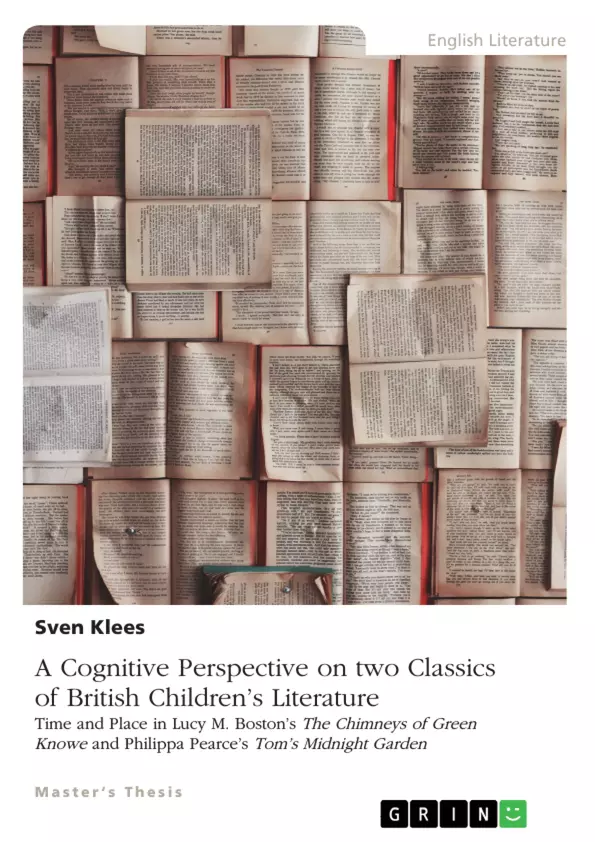This thesis examines the depiction of time and the settings in the two children's novels "The Chimneys of Green Knowe" by Lucy M. Boston and "Tom’s Midnight Garden" by Philippa Pearce. A cognitive perspective of the two books is employed. The relationship between the real author and the readership is assumed to be dialogical; i.e. the meaning of a work is determined by both the author and the reader. Time structures the works follow are analyzed. A distinction is made between linear and mystical time and the consequences for the stories, for the protagonists and for the reader are emphasized. With reference to the socio-historical circumstances at the time the works were created, the significance of the mansions and their gardens as historical archives is analyzed. For the stories, these are an important place for oral transmission, without which it is difficult to make sense of the past. In the last part, the narrative structure of both works, namely the “story in the story”, is used in order to be able to make statements about the textual strategies used, which can improve processing by the readership and achieve a higher level of reading motivation. Easier identification, sympathy, as well as pretend play are suggested as underlying strategies. The thesis closes with a change of perspective and takes a look at child readers' views.
Inhaltsverzeichnis (Table of Contents)
- Introduction
- Part A: What is there to Learn?
- Time
- Time in The Chimneys of Green Knowe
- Time in Tom's Midnight Garden
- Place
- Place in The Chimneys of Green Knowe
- Place in Tom's Midnight Garden
- Part B: Didactic Elements
- Frameworks and Concepts of Cognitive Criticism
- The 'Story in the Story'
- Outlook: Children's Perspectives
Zielsetzung und Themenschwerpunkte (Objectives and Key Themes)
This work aims to examine the cognitive aspects of two classic British children's novels, The Chimneys of Green Knowe by Lucy M. Boston and Tom's Midnight Garden by Philippa Pearce. It focuses on the portrayal of time and place in these stories and how they influence the characters' experiences. The work explores the concept of "time-slip" in these novels and analyzes how the past and present interact within their narratives.
- The concept of "time-slip" in children's literature
- The portrayal of time and place in the novels
- The role of the past in shaping the present
- The influence of storytelling on the characters' understanding of their surroundings
- The didactic elements of the novels and their potential implications for young readers
Zusammenfassung der Kapitel (Chapter Summaries)
- Introduction: This chapter introduces the two novels, The Chimneys of Green Knowe and Tom's Midnight Garden, highlighting their similarities as time-slip novels. It outlines the main characters, Tolly and Tom, and their respective experiences with time travel in their respective settings.
- Time in The Chimneys of Green Knowe: This chapter delves into the portrayal of time in The Chimneys of Green Knowe, analyzing how Tolly's time travels are intertwined with his great-grandmother's stories and the objects and paintings found within the house. It explores how these elements contribute to the blurring of reality and the past in the novel.
- Time in Tom's Midnight Garden: This chapter focuses on the depiction of time in Tom's Midnight Garden, examining how Tom's experiences in the mysterious midnight garden are connected to the striking of the grandfather clock and the shifting seasons and times of day within the garden. It explores the concept of time as a fluid and unreliable element in the novel.
- Place in The Chimneys of Green Knowe: This chapter analyzes the role of place in The Chimneys of Green Knowe, highlighting how the house serves as an archive that keeps history alive. It examines how the characters' interactions with the house and its surroundings contribute to their understanding of the past.
- Place in Tom's Midnight Garden: This chapter explores the significance of place in Tom's Midnight Garden, focusing on how the house and garden act as repositories of memory and shared experience. It examines the relationship between the characters' experiences and the physical environment, highlighting how the past and present are intertwined in the narrative.
Schlüsselwörter (Keywords)
This work explores the key concepts of time-slip literature, the cognitive processes of children, and the role of place in shaping individual experiences. It examines the influence of storytelling on children's perceptions and understanding of the past and present, with a particular focus on the narratives of The Chimneys of Green Knowe and Tom's Midnight Garden. Key terms include time travel, storytelling, memory, place, and the concept of "time-slip" in children's literature.
- Quote paper
- Sven Klees (Author), 2020, A Cognitive Perspective on two Classics of British Children’s Literature, Munich, GRIN Verlag, https://www.grin.com/document/951085



